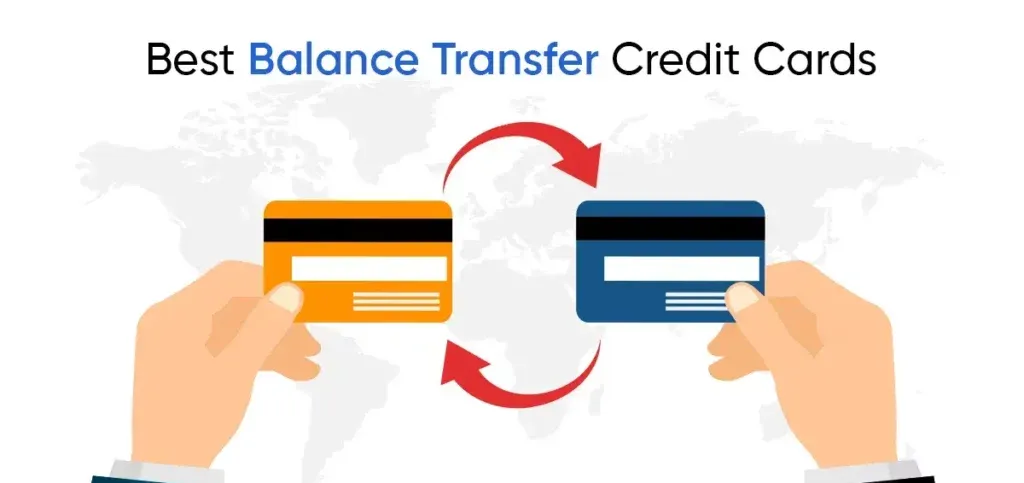Looking for the best balance transfer credit cards? Discover the top options available with low interest rates, long introductory periods, and helpful features. Learn the pros, cons, and why these cards can help you manage your debt.

When it comes to managing credit card debt, finding the best balance transfer credit cards can make a huge difference. These cards offer low or 0% introductory APR on balance transfers for a set period, allowing you to consolidate and pay off high-interest debt more efficiently. With the right balance transfer credit card, you can save money on interest, pay off debt faster, and regain control of your finances. In this blog post, we’ll explore the pros, cons, and reasons why choosing the best balance transfer credit cards can be a smart financial move.
What is a Balance Transfer Credit Card?
A balance transfer credit card allows you to transfer the outstanding balances from other credit cards onto one card with a lower interest rate. Many of the best balance transfer credit cards come with an introductory 0% APR offer for a certain period (often 12 to 21 months). During this period, you won’t pay interest on the transferred balances, which can help you save money while paying down debt.
Pros of the Best Balance Transfer Credit Cards
- Lower Interest Rates: The most significant benefit of best balance transfer credit cards is the 0% or low introductory APR on balance transfers. This gives you the chance to pay off your debt without the burden of high-interest rates.
- Debt Consolidation: If you have multiple credit cards with outstanding balances, a balance transfer credit card can help you consolidate your debt into one monthly payment, simplifying your finances and reducing the risk of missed payments.
- Save Money on Interest: By transferring your balances to a card with 0% APR, you can significantly reduce the interest you would have otherwise paid. This allows more of your monthly payment to go toward paying down your principal balance rather than interest.
- Improve Your Credit Score: Reducing your credit utilization ratio by consolidating debt onto one card can have a positive impact on your credit score. A lower utilization ratio shows that you’re using credit responsibly, which is a key factor in your credit score calculation.
- Flexible Repayment: The long introductory periods offered by the best balance transfer credit cards (12-21 months) give you more time to pay off your debt without accruing additional interest. This flexibility can help you manage your payments more comfortably.
Cons of the Best Balance Transfer Credit Cards
- Balance Transfer Fees: Many of the best balance transfer credit cards charge a fee for transferring balances, typically 3%-5% of the transferred amount. While this fee is often lower than the interest you would pay on high-interest cards, it’s still something to consider.
- Deferred APR Period: Once the 0% APR introductory period ends, the interest rate can jump significantly, sometimes reaching 15%-25% APR. If you haven’t paid off the balance in full before the promotional period ends, this could result in a higher-than-expected interest charge on any remaining balance.
- Not All Debts Qualify: Some balance transfer credit cards only allow you to transfer balances from other credit cards. You may not be able to transfer balances from loans or other types of debt.
- Temptation to Spend: Having access to a credit card with a high credit limit and 0% APR could tempt you to make unnecessary purchases. It’s important to resist the urge to overspend, as this can worsen your financial situation.
- Limited Credit Approval: Depending on your creditworthiness, you may not be approved for the best balance transfer credit cards, especially if you have a high debt-to-income ratio or a low credit score. You may need to meet specific eligibility criteria to qualify for the best offers.
Why Choose the Best Balance Transfer Credit Cards?
Choosing the best balance transfer credit cards can be a smart way to manage existing credit card debt. By transferring your balances to a card with a low or 0% APR introductory offer, you can save money on interest and pay off debt faster. However, it’s crucial to read the terms and conditions carefully, especially regarding fees and the standard APR after the introductory period. If you can make a plan to pay off the balance within the promotional period and avoid overspending, a balance transfer credit card can be an excellent tool to regain control of your finances and work toward becoming debt-free.
Top 5 Best Balance Transfer Credit Cards
Here are five of the best balance transfer credit cards currently available in the U.S.:
- Chase Slate®
- Annual Fee: $0
- Introductory APR: 0% for 15 months on balance transfers
- Balance Transfer Fee: 5% or $5, whichever is greater
- Why Choose It: No annual fee, and one of the best introductory APR offers for balance transfers. This card also offers flexible repayment terms.
- Citi® Double Cash Card
- Annual Fee: $0
- Introductory APR: 0% for 18 months on balance transfers
- Balance Transfer Fee: 3% of the transfer amount
- Why Choose It: Offers a great 2% cashback on purchases (1% when you buy, 1% when you pay off), in addition to a solid balance transfer offer.
- Discover it® Balance Transfer
- Annual Fee: $0
- Introductory APR: 0% for 18 months on balance transfers
- Balance Transfer Fee: 3% of the transfer amount
- Why Choose It: Along with the balance transfer promotion, Discover offers cashback rewards, including a bonus for new cardholders at the end of the first year.
- BankAmericard® Credit Card
- Annual Fee: $0
- Introductory APR: 0% for 18 billing cycles on balance transfers
- Balance Transfer Fee: 3% of the transfer amount
- Why Choose It: This card is a good option for those who need a long introductory period to pay off their transferred balances.
- Wells Fargo Reflect® Card
- Annual Fee: $0
- Introductory APR: 0% for 18 months on balance transfers (up to 21 months with on-time payments)
- Balance Transfer Fee: 3% of the transfer amount
- Why Choose It: With one of the longest introductory APR periods available, this card offers plenty of time to pay off your debt without interest.
Conclusion
In conclusion, the best balance transfer credit cards can be an invaluable tool for managing and paying down debt. By taking advantage of low or 0% APR introductory offers, you can reduce the amount you pay in interest and pay off your balances faster. However, be mindful of balance transfer fees, the promotional period’s end, and any temptation to accrue new debt. If used responsibly, a balance transfer credit card can help you take control of your finances and work toward becoming debt-free.






